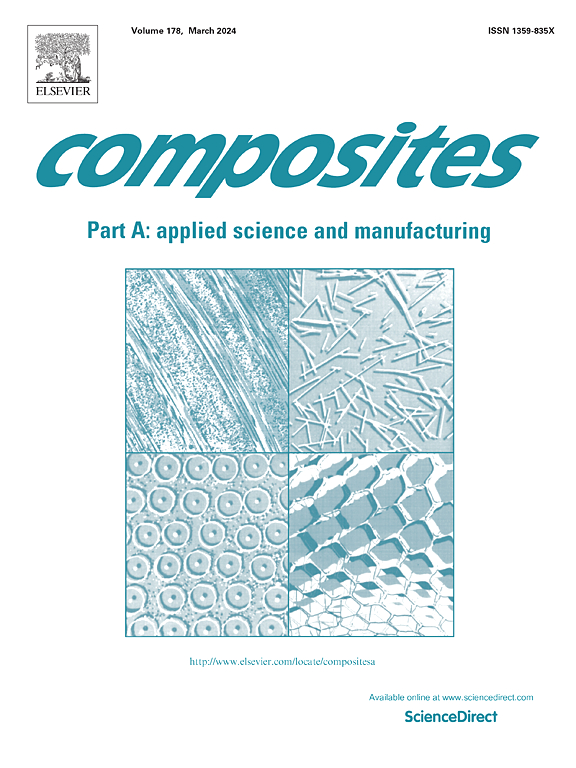碳黑弹性加压传感器电阻率有限元模拟的广度优先搜索算法
IF 8.1
2区 材料科学
Q1 ENGINEERING, MANUFACTURING
Composites Part A: Applied Science and Manufacturing
Pub Date : 2024-10-13
DOI:10.1016/j.compositesa.2024.108523
引用次数: 0
摘要
采用有限元法和导电网络模型研究了炭黑(CB)弹性纳米复合材料的电阻率和压阻灵敏度。在随机位置将炭黑球放入代表体积元素(RVE)中进行模拟,并获得粒子的应变状态和新位置。数值结果被应用到广度优先搜索算法中,该算法根据应变状态下 CB 之间的最短距离,专门用于寻找从 RVE 一端到另一端的渗流路径。导电网络模型利用渗流路径来确定电阻率的临界距离。电阻率随着临界距离的增加而减小,这是因为有更多的电子穿透了势垒。随着势垒电位的增加,发生隧穿的临界距离也会增加。更小的 CB 可以更有效地占据间隙,从而减少了发生渗滤所需的临界距离范围。本文章由计算机程序翻译,如有差异,请以英文原文为准。
Breadth-first search algorithm on the finite element simulation of the electrical resistivity of the carbon black elastomeric pressurized sensor
Resistivity and piezoresistive sensitivity of Carbon Black (CB) elastomeric nanocomposites are studied using a finite element method with a conductive network model. CB spheres are placed into Representative Volume Elements (RVEs) in random positions to perform simulations and obtain the strained state and new position of particles. Numerical results are implemented into a breadth-first search algorithm tailored to find percolation pathways from one end of the RVE to another based on the shortest distance between CBs in the strained regime. Percolation pathways are used by the conductive network model to determine the critical distance for resistivity. Resistivity diminishes as the critical distance increases attributed to a greater number of electrons penetrating the barriers. Critical distance at which tunneling can occur expands with an increase in barrier potential. Smaller CBs that can more efficiently occupy the gaps lead to a reduction in the critical distance range necessary for percolation to happen.
求助全文
通过发布文献求助,成功后即可免费获取论文全文。
去求助
来源期刊

Composites Part A: Applied Science and Manufacturing
工程技术-材料科学:复合
CiteScore
15.20
自引率
5.70%
发文量
492
审稿时长
30 days
期刊介绍:
Composites Part A: Applied Science and Manufacturing is a comprehensive journal that publishes original research papers, review articles, case studies, short communications, and letters covering various aspects of composite materials science and technology. This includes fibrous and particulate reinforcements in polymeric, metallic, and ceramic matrices, as well as 'natural' composites like wood and biological materials. The journal addresses topics such as properties, design, and manufacture of reinforcing fibers and particles, novel architectures and concepts, multifunctional composites, advancements in fabrication and processing, manufacturing science, process modeling, experimental mechanics, microstructural characterization, interfaces, prediction and measurement of mechanical, physical, and chemical behavior, and performance in service. Additionally, articles on economic and commercial aspects, design, and case studies are welcomed. All submissions undergo rigorous peer review to ensure they contribute significantly and innovatively, maintaining high standards for content and presentation. The editorial team aims to expedite the review process for prompt publication.
 求助内容:
求助内容: 应助结果提醒方式:
应助结果提醒方式:


